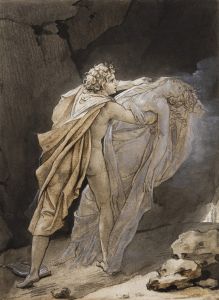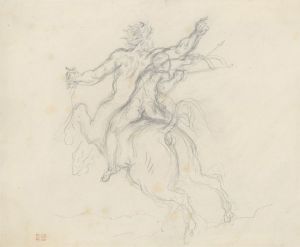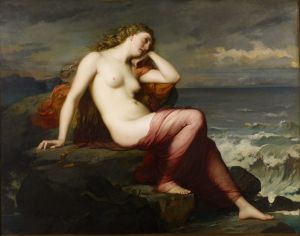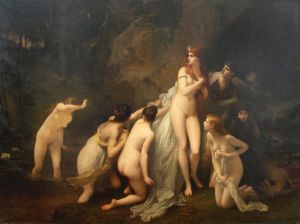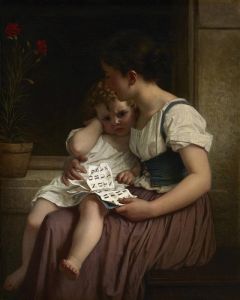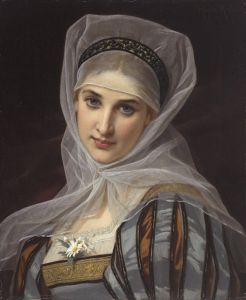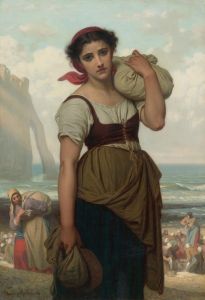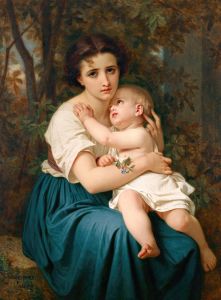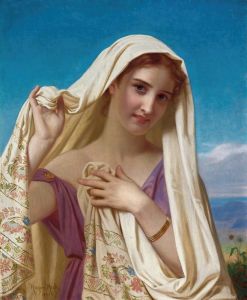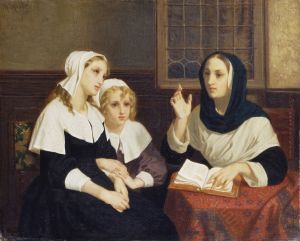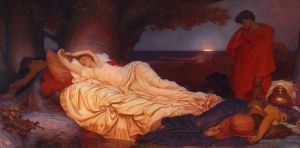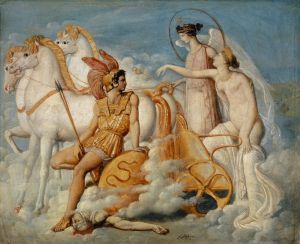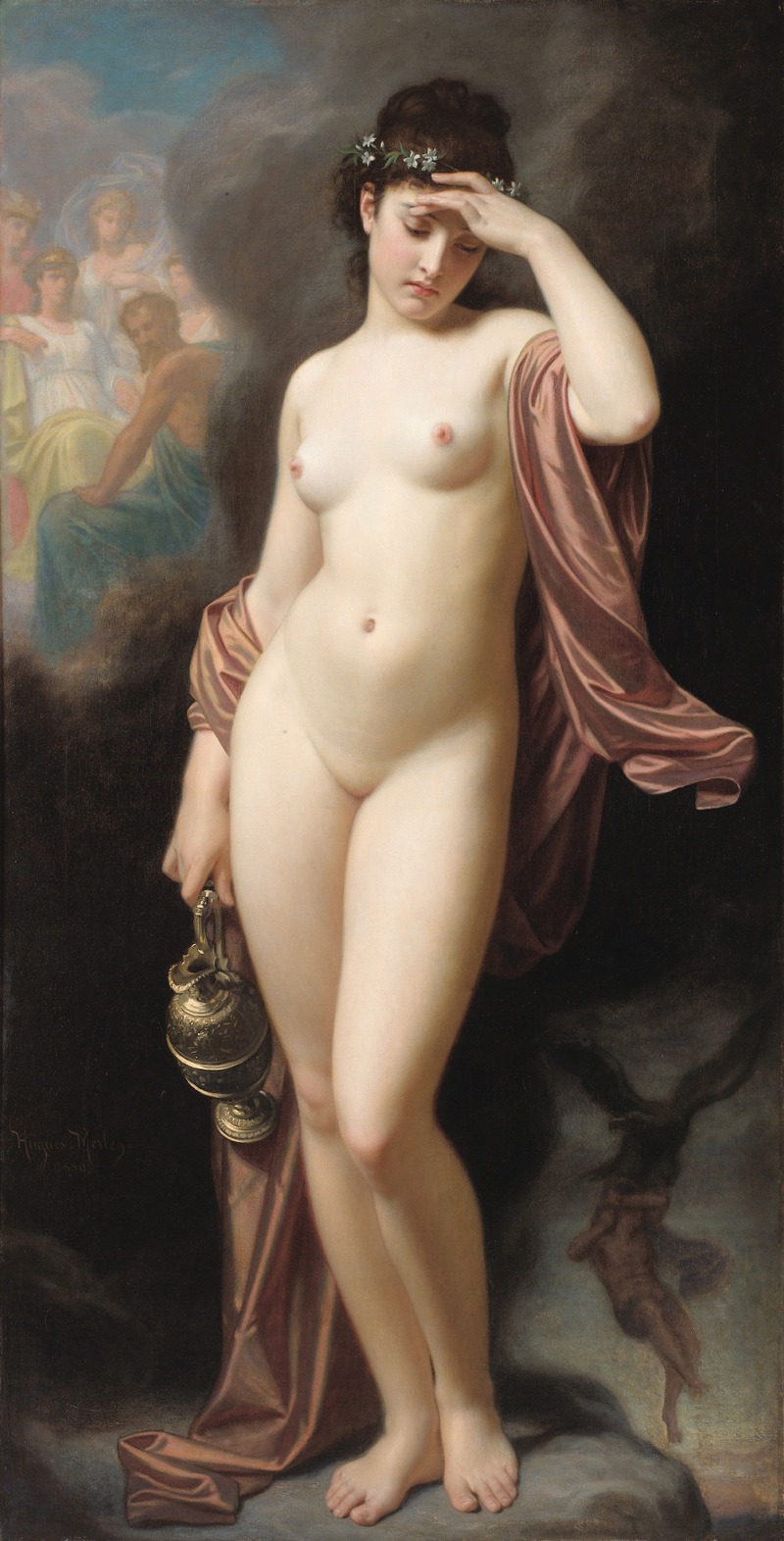
Hebe after the fall
A hand-painted replica of Hugues Merle’s masterpiece Hebe after the fall, meticulously crafted by professional artists to capture the true essence of the original. Each piece is created with museum-quality canvas and rare mineral pigments, carefully painted by experienced artists with delicate brushstrokes and rich, layered colors to perfectly recreate the texture of the original artwork. Unlike machine-printed reproductions, this hand-painted version brings the painting to life, infused with the artist’s emotions and skill in every stroke. Whether for personal collection or home decoration, it instantly elevates the artistic atmosphere of any space.
Hebe after the Fall is a painting by the French artist Hugues Merle, a notable figure in the 19th-century art scene. Merle, born in 1823 and deceased in 1881, was known for his genre paintings and portraits, often drawing comparisons to his contemporary, William-Adolphe Bouguereau. Merle's works are characterized by their detailed realism and emotional depth, often exploring themes of classical mythology, domestic life, and human emotion.
The painting "Hebe after the Fall" depicts the mythological figure Hebe, the Greek goddess of youth. In mythology, Hebe was the daughter of Zeus and Hera and served as the cupbearer to the gods, providing them with ambrosia, the drink of immortality. Her role as a divine servant was significant in maintaining the gods' eternal youth. However, the title "Hebe after the Fall" suggests a narrative moment after Hebe's fall from grace, which is a theme explored in various mythological stories where she loses her position as cupbearer due to a mishap or the jealousy of other gods.
Merle's interpretation of Hebe captures the emotional and physical vulnerability of the goddess after her fall. The painting is likely to exhibit Merle's signature style, which includes a focus on the human form, delicate use of light and shadow, and a composition that draws the viewer into the emotional state of the subject. The portrayal of Hebe would typically emphasize her youthful beauty and grace, even in a moment of distress or transition, reflecting the artist's ability to convey complex emotions through facial expressions and body language.
Hugues Merle's work, including "Hebe after the Fall," fits within the broader context of 19th-century French art, which was marked by a fascination with classical themes and a revival of interest in Greco-Roman mythology. This period saw artists exploring these themes with a new sense of realism and emotional depth, moving away from the more idealized representations of earlier periods.
Merle's paintings were well-received during his lifetime, and he exhibited regularly at the Paris Salon, the official art exhibition of the Académie des Beaux-Arts in Paris. His works were appreciated for their technical skill and the way they captured the subtleties of human emotion and experience. "Hebe after the Fall" would have been part of this tradition, contributing to Merle's reputation as a skilled painter of both mythological and genre scenes.
While specific details about the painting's current location or provenance might not be readily available, Merle's works are held in various collections and museums, reflecting their continued appreciation and historical significance. His paintings remain a testament to the artistic trends and cultural interests of 19th-century France, offering insights into the ways artists of the time engaged with mythological narratives and human emotion.





